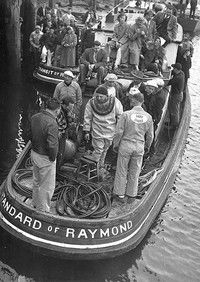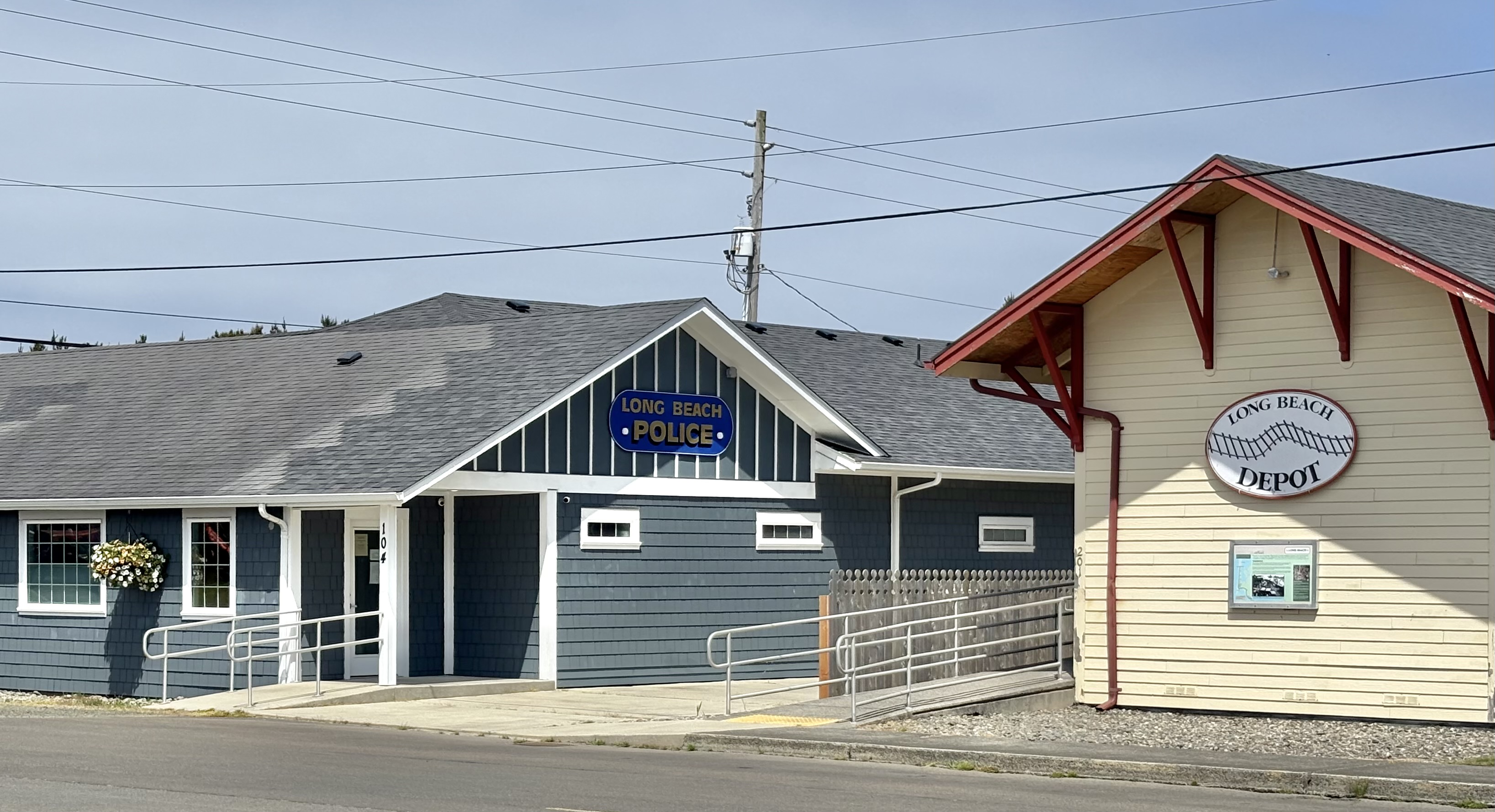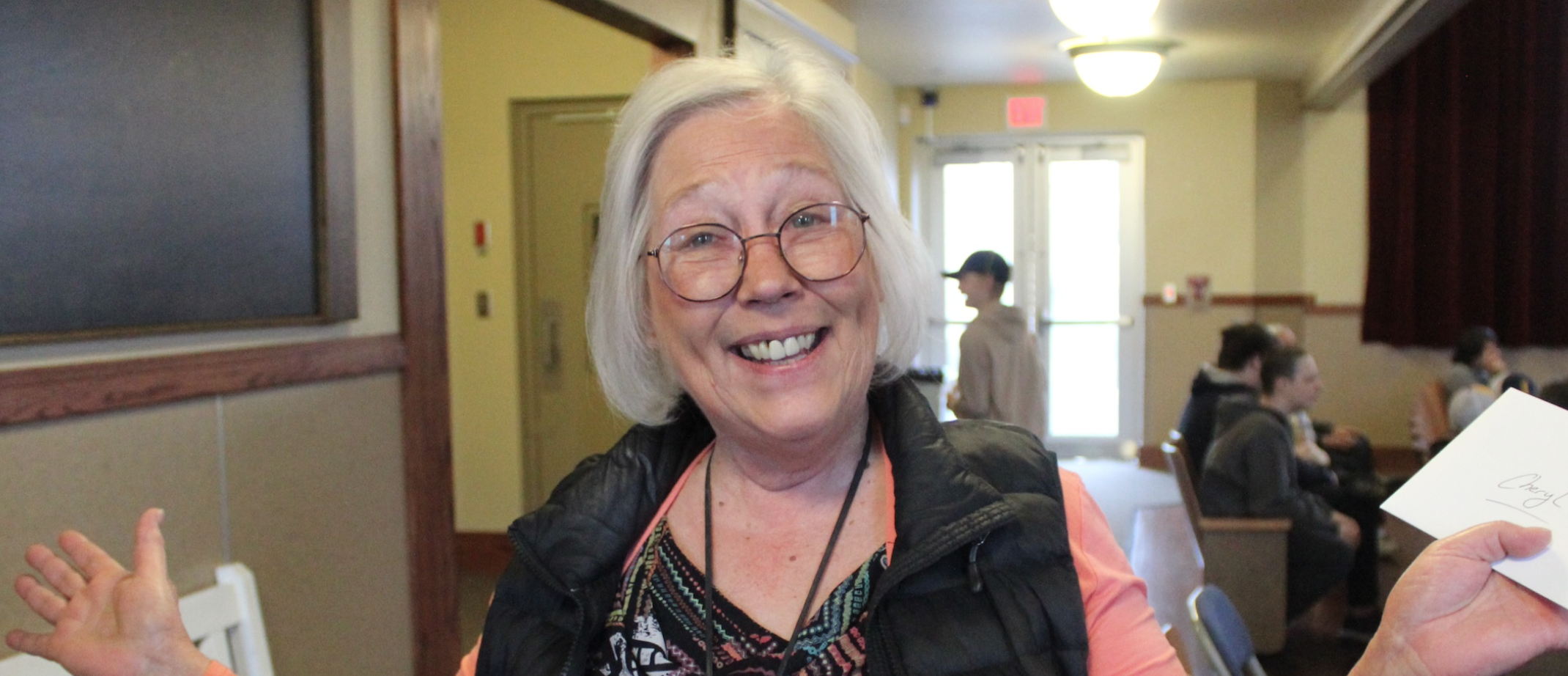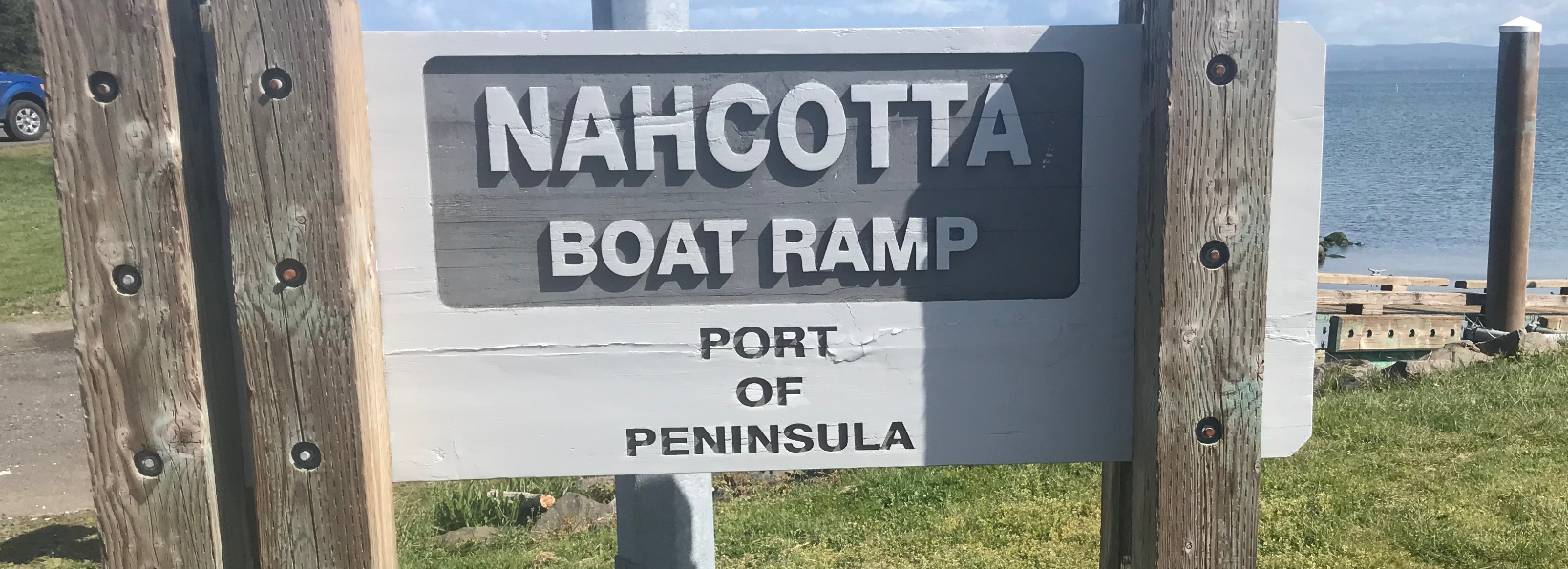Raymond grows into vibrant little port city
Published 4:00 pm Monday, December 23, 2002

- Alma Smith joined Bert Ellis to establish the Standard Towing Company in Raymond, which operated on the waterfront for many years.
Part 2
A. C. Little
Alexander C. Little is recognized as the person most responsible for the founding of Raymond. There is no doubt that it was his spirit and drive that formed the character of the town in its first 10 years. Born in Charles City, Iowa, in 1859, Little came to Washington state in 1889, the year of statehood. In 1894 he became mayor of Aberdeen and was the campaign manager for John R. Rogers in his 1896 race for governor. Rogers won, and as a reward for the successful campaign, Little was appointed head of the State Fisheries Commission.
A rising star in the state’s Democratic Party organization, Little managed Rogers’ successful bid for reelection in 1900. When the governor died in 1903, A. C. decided to throw his energies into the development of a new veneer company. This led Little to Pacific County to search for an industrial site. Blocked from choosing a site in South Bend, Little quickly realized the possibilities on the Willapa’s South Fork. One of his early coups was to encourage H. C. Heermans of Olympia, to get involved with the project because of his engineering and business know-how. It was Little, the state politico and budding land promoter, who devised a plan to develop the surrounding wetland. Raymond was named for L. V. Raymond, but from the beginning, it was Little’s town.
One of Little’s schemes was to give free land and water to the earliest mill operators while promoting land sales on adjacent properties, much of which had been purchased in county sales from the earlier failed South Bend land boom. Many people, including Stella Raymond, believed that South Bend leaders had foolishly ridiculed Little when he talked of building his mill on the South Fork. More than one South Bender repeated the sentiment, “Forget the tide flats near the South Fork – it’s only good for duck hunting.”
The New Town
The Raymond Land and Development Company, organized in 1903, oversaw the development of several mills and the surrounding townsite. The land company was capitalized for $100,000 and its incorporators included the Raymonds, Cram, J. B. Duryea, and John T. Welsh. A. C. Little was the manager. The articles of incorporation permitted the company to do a lumbering and logging business, operate flumes, tugboats, tramways, build houses, and lay out a town site. A sister company, the Great West Land Company, with an original capital stock of only $10,000, was also organized. The officers were J. B. Duryea, Winfield Cram, and Martin C. Welsh. The Great West controlled about 1,900 acres of land, including parts of St. Paul and Hewitt’s Additions to South Bend. The company also held an option on 1,600 acres of timber. Martin Welsh also became a member of the Raymond Land company, as did H. C. Heermans and newcomer Claude House, Sr.
On April 6, 1904, A. C. Little and others submitted a petition for a new political precinct to be called Raymond. An election for the incorporation was not held until Aug. 3, 1907. Little had an office built on a planked “street,” which ran from the railroad tracks and the Willapa River. Nearby was Issac “Ike” Anderson’s saloon, the Norby and Owen Store, and Mrs. Woolf’s mess house, which served the workers of Siler’s Mill. A two story building was constructed to be used as a drug store and a contract was signed to build a small hotel.
Then came 2,900 feet of wooden sidewalk. Little planned to use the refuse from his veneer plant’s burner to fill in the tide flats. Three city blocks were reserved to the public, one block on the South Fork near the railroad, and the other two on the Willapa, on each side of the river. Between those two places the Zawadski brothers rowed a boat, carrying people back and forth across the river. Stella Raymond called it the “Lithuanian ferry.”
Across the river from the mill 40 acres were platted in Riverside, with another 90 acres on the south side, at Johnson’s Island. To get from the Island to the mill sites, a long boardwalk was constructed. The old Riverside post office, which had originally been established in 1871, had been closed since 1896, with all mail sent to South Bend. The first Raymond post office was opened in 1904 and was housed in L. V. Raymond and August Rugger’s small merchandise store. L. V. became the first postmaster, with the post office consisting of a desk with some crude pigeon holes.
By the end of May, 1905, the new town had two general stores, a town hall, and its first doctor, O. V. Nevitt. There was a stable at Riverside where teams and wagons were kept. In 1904, P. W. Shepard began a hauling service with one horse, which he used mostly to carry wood. Six months later, S. L. Dennis bought an interest in the operation.
First Street soon became a fearful and wonderful business street with its wooden sidewalk down each side, built on pilings. A growing number of stores, meat markets, lodging houses, barber shops, saloons and dance halls were built, all facing each other across the muddy and watery void. Pigs rooted for refuse cast there for dispersal, with the tides utilized as the town’s street cleaner.
On June 2, 1905, the first (Methodist) church was dedicated. Around the same time, Elmer E. Case bought out Turney and Martin and opened his shingle mill operation. In 1906 the first bank, the Raymond Trust Company, was opened for business. Headed by J. J. Haggerty, it failed under a cloud of fraud charges in 1914. Stella Raymond later commented that the “trust” had gone out of Raymond Trust.
Water Transportation
In late 1903 George Bale suggested that the launch Daphne (owned at that time by A. C. Little’s West Coast Veneer) might be used to transport South Bend mill workers to and from their jobs at the South Fork (Raymond) mills. At first the suggestion was rejected, pointing out that the boat was needed for other jobs. It was not long before boats arrived from other locations, along with new boats constructed at local boat shops. Between 1904 and 1913 several gas launches competed for the passenger and freight service between South Bend and Raymond. Among these vessels were the Daphne (sold in 1904), Echo, General Sheridan, Lassie, Lewis, Queen, Swift, Vine and Union.
By 1907 and 1908, the Daphne and the Fearless were operated by Captain Thomas Bell’s Pacific Transportation Company for the 20 minute river run between the rival towns. The Daphne, 71-feet-long, with a 12-foot beam, had been purchased from West Coast Veneer in 1904. For many years, the Fearless was captained by Alma Smith. After Smith joined Bert Ellis to establish the Standard Towing Company, the Fearless was added to their fleet of boats. More than two decades later, in the 1930s, the Fearless was still working, pulling the Milwaukee rail car barge from South Bend’s Mill to Raymond.
In 1905 W. C. Cram and N. A. Ellsworth initiated the service of the 35-ton Queen, to compete with the owners of the Fearless. Built in Astoria in 1892, the Queen had worked on the Columbia River and Puget Sound before coming to Willapa Bay.
In competition with Captain Bell’s Pacific Transportation Company were the General Sheridan and the Lassie. The Lassie, a 55-foot gas launch, was brought to Willapa Bay in 1906 by Captain Henry Gracey and partners Alex McBride and Carl Carlson. (Captain Carlson also owned the Echo, a small 25-foot gas launch used to carry goods for the Eagle Cash Store and the Norby and Owens Store.) The Lassie was advertised as one-half the size of the Daphne, but with a 36 horsepower engine, it was the fastest launch on the bay. In 1907 the General Sheridan was brought to the bay from the Columbia River by Captain Gracey and another partner, Captain A. V. Reeves. (In 2002, some of the communities’ oldest citizens retain childhood memories of riding on the General Sheridan or Lassie on the South Bend-Raymond run.)
The Shipyards
Between 1907 and 1918, Raymond had three shipyard operations, all in the same general location, along the Willapa River, slightly northeast of the Island neighborhood. Each of the three shipyard operations was short-lived, lasting no more than a year and a half.
The first of the yards, operated by J. W. Dickie and Sons, was gone within a year and a half. Beginning in January, 1907, 400 pilings were driven for the shipyard, steaming plant and sawmill. The first ship built at the Dickie yard was the Willapa, 195 feet in length, with a 38-foot beam. The vessel was built for Sudden and Christenson and had a capacity for 800,000 board feet of lumber. Before financial problems closed the business, two more ships were launched, one the Doris and the other the Majestic. (By the time the Doris was launched the company had already been placed in receivership.) The Majestic, launched on July 22, 1908, and the largest of the three vessels, was 211-feet-long, with a capacity of one million feet of lumber. As soon as the vessel was launched, the Dickie yard was closed. In 1910 E. E. Case purchased the closed shipyard to organize the Southwest Manufacturing Company. The Southwest Mill burned in 1913, but was rebuilt and operated until the mid-1920s.
In 1913, the Peterson Shipyard, also short-lived, was operated by Andrew Peterson. The Peterson yard was located near the old Dickey site, adjacent to the Southwest Manufacturing sawmill. The Solano (1913) was the first Peterson-built ship to be launched. In August of the same year, the Mukilteo was launched. Soon afterwards, the Peterson operation was out of business.
The third shipyard, and the largest, was begun in 1918, and was operated by Sanderson and Porte, the same company that managed Raymond’s Willapa Electric Company, and the South Bend-Raymond electric railway. The company’s wooden-hulled ships were part of a nation-wide operation intended for ferrying troops overseas during World War I.
These 3,500-ton vessels were “Ferris-type” hulls, known as the Liberty ships of World War I. The wooden freighters were named for their creator, nationally recognized naval architect, Theodore E. Ferris. Several hundred of the vessels, under contract to the United States Shipping Board Emergency Fleet Corporation, were built at shipyards around the United States. One of the first contracts issued by the EFC was to the Raymond yard.
Unfortunately for the local economy, building activity was curtailed with the surprising end of the war in November 1918. Although five hulls were launched in Raymond, another five were in various stages of completion, and those projects were cancelled. Only two of the 10 hulls were completed to sail as steamers. (The remaining hulls were later used as barges in other ports.) The two completed ships, the Fonduco and the Kenosha, were launched and had brief careers. As many as 1,000 workers had been employed by the shipyard before the work was stopped in 1919.
Raymond’s river and waterfront always attracted workers and onlookers. This included one particular accident on a Saturday evening in the early 1950s. On that evening, a Tacoma businessman was on his way to the Megler ferry, to meet with associates in Astoria the next day. Apparently confused because of a dense fog, the man stopped at a Raymond restaurant, drank a cup of coffee, made of phone call to his wife, and asked a bartender for directions to the Megler ferry. The man was told to drive “straight down the street” to the South Fork bridge. Unfortunately, the man was not told, or did not clearly understand that he needed to make a sharp left turn onto Alder Street when he reached the foot of First Street. (In those days the bridge connected Third Street with Ocean Avenue, all a part of highway 101.) The unsuspecting man, in his Chrysler coupe, proceeded ahead, saw planking through the dense fog, and may have assumed he was on a bridge. He was not – instead he drove through a railing and crashed several feet down into the South Fork branch of the Willapa River. In the thick fog on that Saturday evening no one witnessed the fatal accident.
The next morning a local law enforcement officer noticed tire tracks, the broken railing, and oil bubbles in the water. When the car was pulled from the river, a crowd of 300 curiosity-seekers was on hand to see Ed Triplett put on a diver’s outfit and descend into the river, to attach cables to lift the car and recover the body. To do the work, Triplett brought two boats to the scene, the historic towboats Standard and Transit. At that time both boats had been in operation on the river and bay for almost a half century.
1908: The Inbound Train Arrives 3:28 p.m.
At 14-miles-per-hour, the last dozen miles of the Chehalis to South Bend rail line was sometimes claimed to be the roughest train ride in the state of Washington. From the Lebam depot to South Bend the track bed was poorly built over a series of swamps and wetlands, giving passengers a feeling they were in a boat on a rough and rocky sea. Regardless of the bumpy ride, the arrival in Raymond was at the brand new depot, open only for a few weeks. The stop would be a quick one, since the end of the line was not far away, at the South Bend depot. With a rush of people leaving and boarding the cars, the procession was soon on its way to South Bend.





